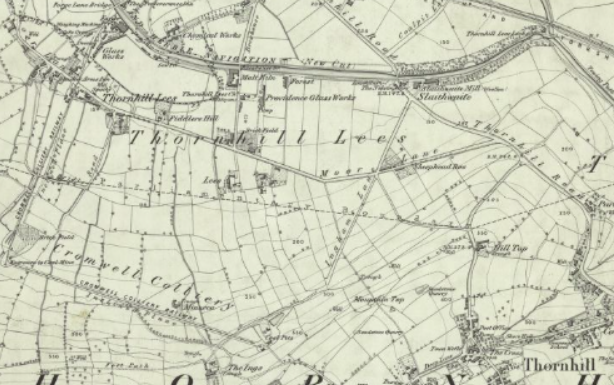
Reproduced with the permission of the National Library of Scotland
Ingham Colliery, to the north of the villageSmall rural collection of buildings with a church. of Thornhill in West Yorkshire, was sunk by the Ingham family in 1875. It survived until nationalisationStatutory corporation created to run the coal mining industry in the United Kingdom under the Coal Industry Nationalisation Act 1946. in 1947, when it was amalgamated with Combs Colliery.[2]
The Inghams, who owned Cromwell Pit on the hillside above Thornhill Lees, decided to sink a new pit adjacent to it in 1875. The new Ingham Colliery was sunk near the Cromwell Pit on the opposite side of the hill, 1330 yards (1,216 m) west of their Combs Colliery and one mile (1.6 km) from Thornhill railway station. It had two brick-lined shafts; No. 1 downcast was 13 feet (4 m) in diameter and the No. 2 upcast was 14 feet (4 m) in diameter. They accessed the Low Moor Black Bed seam at a depth of 276 yards (252 m).[3] The shafts had wooden headstocks and the winding gear was supplied by Pigott and Farrar of Barnsley.[4]
In 1883 the pit was linked to the Lancashire & Yorkshire Railway by a 1.5-mile (2.4 km) long mineral line worked by a locomotive that replaced the inclined planes. After 1888 the Beeston seam was worked from No. 2 shaft. Only coal was brought to the surface; dirt was packed underground and slack was sent to the coking ovens. Ingham was linked to the Combs pit for ventilation. Inghams commissioned new coking ovens in 1891, and bought another steam locomotive.[4]
